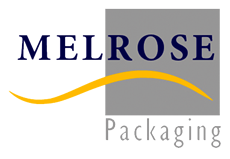Supplier & Manufacturer of Polythene Packaging since 1973.
+44 1234 841144
Email: [email protected]
Melrose Packaging
Units 3 + 4 St. Martins WayBedford Bedfordshire MK42 0LF UK
How to Choose the Right Plastic Bag Size
Let us help you specify the right bag. Plastic bags are defined by size and thickness (gauge).
On the majority of standard, the first measurement is along the top ie the opening.
Example 1 - 10 x 12 this means the bag is 10 inches wide and 12 inches long. These sizes are when the bag is laid flat.
Example 2 - 18 x 32 x 39 this means the bag has a gusset - i.e. it is tapered in at the bottom. A gusset is useful when using the bag as a bin liner as it folds the excess polythene into the bottom of the bag. The first dimension is the width at the bottom, therefore in this example, the bag would be:
18 inches = is the width of the closed bag
32 inches = is the width of the open bag
39 inches = length of the bag
How thick do you require the bags?
100 gauge - 'Light-duty' – suitable for a protective covering or light goods.
200 gauge - 'Medium duty' – suitable for most general uses.
400 gauge - 'Heavy duty' – suitable for when higher strength is required.
New bags available:
- 30 Litre Green Bags (200 Per Box) (125 Boxes)
- 50 Litre Green (200 Per Box) (35 Boxes)
- 100 Litre Green (100 Per Box) (175 Boxes)
- 30 Litre Red Bags (200 Per Box) (180 Boxes)
- 50 Litre Red Bags (200 Per Box) (110 Boxes)
- 100 Litre Red Bags (100 Per Box) (120 Boxes)
Please do not hesitate to contact us if you would like any further help with specifying the correct product for you +44 1234 841144 and we would be happy to help or send out a sample.
Plastic Bags and the Environment
Our aim at Melrose Packaging is to sell products made from recyclable or degradable material where it makes sense. Plastic bags made from virgin or recycled material can be recycled and most manufacturers routinely process recycled material. The raw material for this recycling is collected from industry and the mainstream schemes operated by councils and recycling companies.
Many of the current issues with plastic can be attributed to the fact that we are a long way from actually recycling enough recyclable material. In the main this is due to poor collection methods where not enough attention is paid to different material types as well as a general lack of information available to consumers. For many years it has been possible to buy ‘degradable’ bags and these are of two main types – ‘corn starch’ (known as PLA) and oxy degradable and opinion remains divided about their relative merits.
- Corn Starch – PLA. These are sold as compostable but it should be noted that only industrial composting creates the correct conditions for them to effectively decompose. The material cannot be recycled and they cause mayhem when mixed with other polyethene bags in established recycling schemes. A further point is that while the raw material is plant-based and relatively easy to produce it does consume resource that could be more effectively used in food production.
- Oxy Biodegradable. These are more widely available but the big drawback is that they need light and air to degrade – something not available if they are dumped in landfill which is presently the most common end result.
Both of the above options carry a price premium which is mainly due to higher production costs although many consider that consumers pay for the green credentials.
Some argue that degradable plastic bags are a waste of resource and send the wrong message (it is okay to throw this thing away). Although potentially re-usable to some degree, by definition they have a limited life and cannot be re-processed. Worse still, they cause mayhem when mixed with other polyethene bags in established recycling schemes.
FEEDBACK
We would like to hear from you with any feedback about our website or products.

